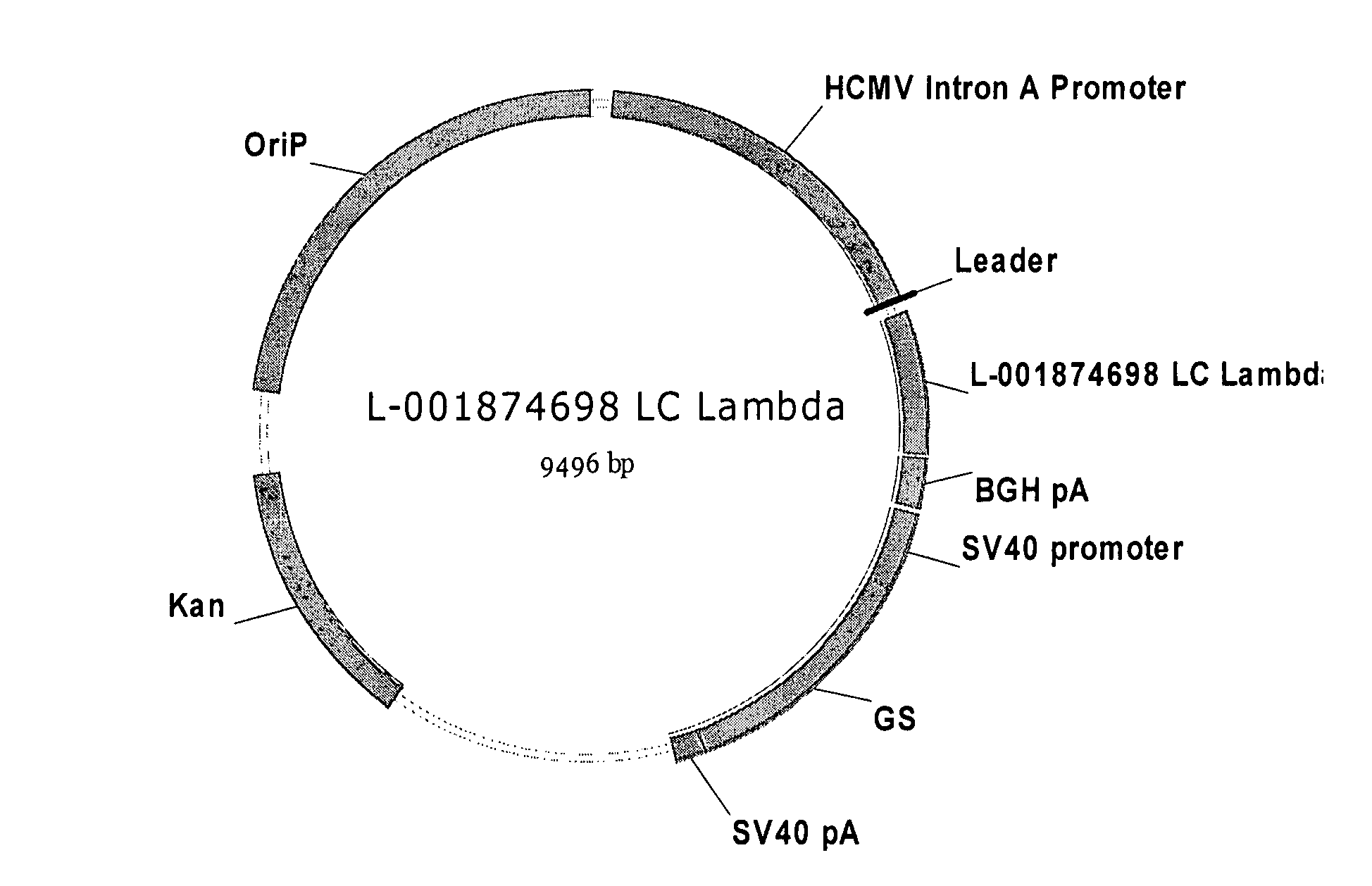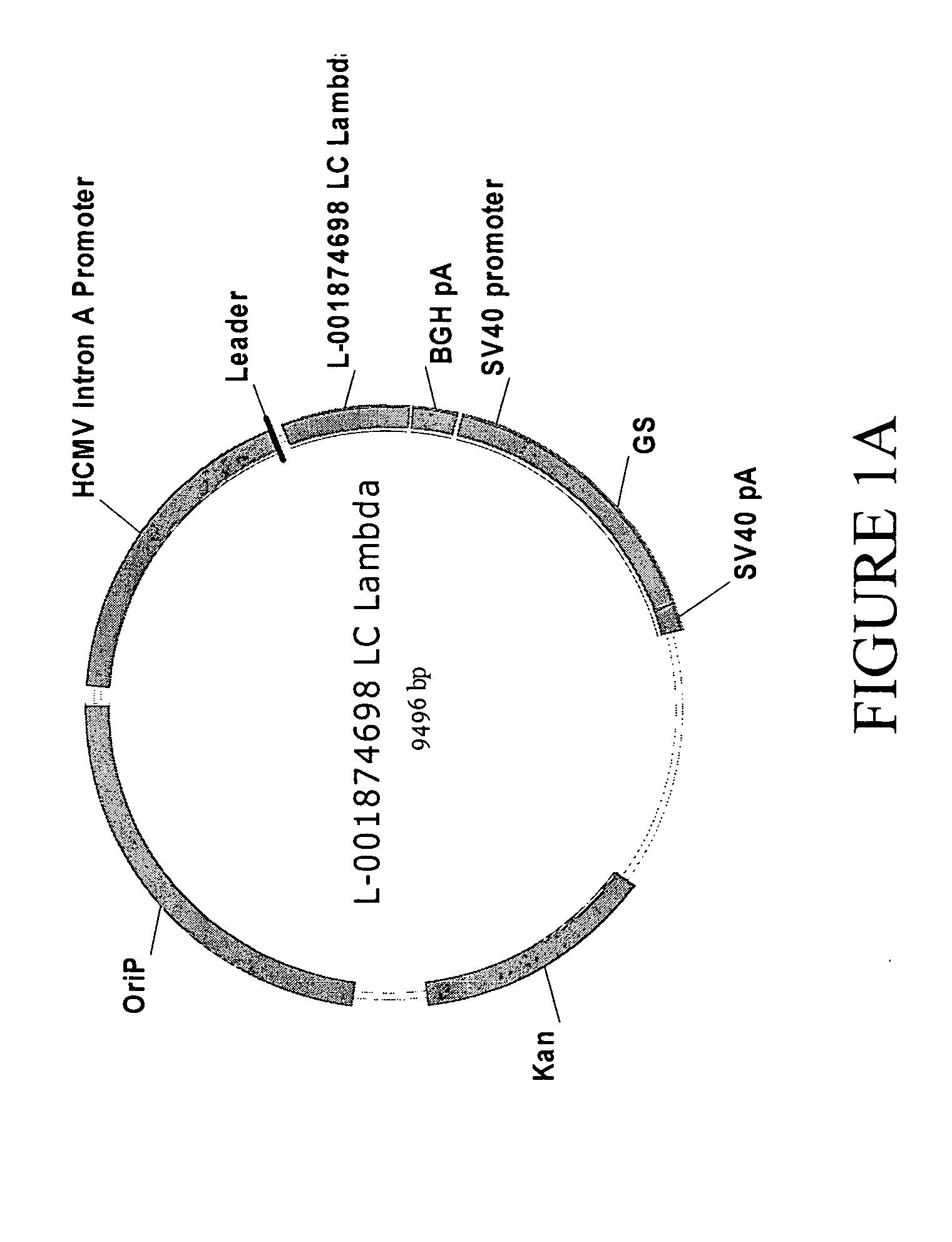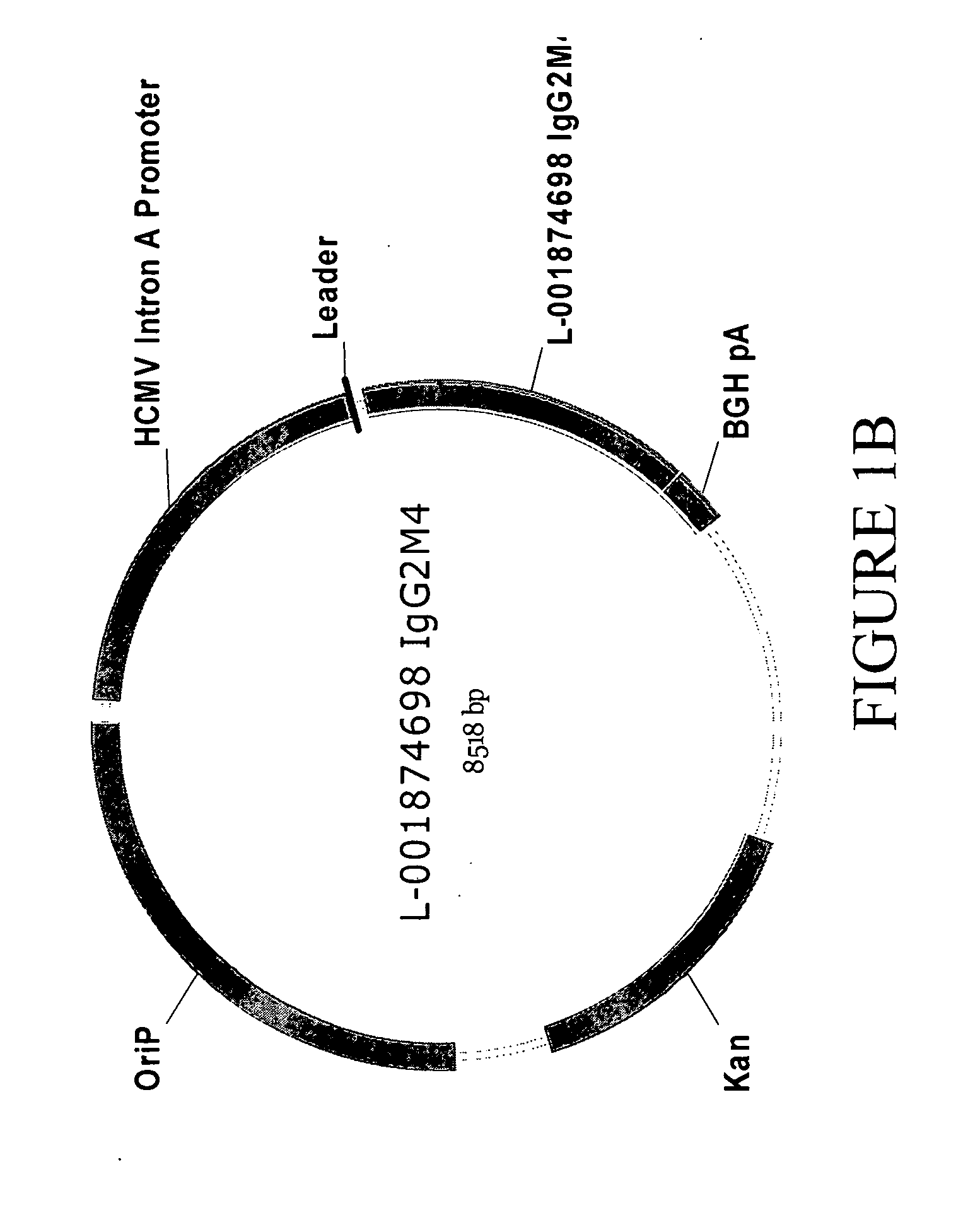Antibodies specific for DKK-1
a technology of dkk-1 and antibodies, applied in the field of antibodies and immunologically functional fragments of dkk-1, can solve the problems of increased risk of bone fracture, increased production and longevity, and increased risk of osteoporosis in menopausal women, so as to inhibit the interaction
- Summary
- Abstract
- Description
- Claims
- Application Information
AI Technical Summary
Benefits of technology
Problems solved by technology
Method used
Image
Examples
example 1
[0118]The human anti-Dkk-1 antibodies were prepared using the Cambridge Antibody Technology (CAT) human single chain Fv phage display library (Cambridgeshire, United Kingdom). The library was panned against both Rhesus monkey and mouse Dkk-1 (RhDkk-1 and MsDkk-1, respectively). Each library was subjected to three rounds of solution-based panning against biotin labeled Dkk-1 (100 nM). Though the percentage of sequence identity and similarity is high between mouse and rhesus Dkk-1, six different panning strategies were employed to ensure library selections would cross react to Dkk-1 from both species (Table 4). It is from scheme (E) that all subsequent data originates.
TABLE 4CAT scFV Phage Display Library Selections vs. Dkk-1SchemeRound1Round 2Round 3AMsDkk-1MsDkk-1MsDkk-1BMsDkk-1RhDkk-1MsDkk-1CMsDkk-1MsDkk-1RhDkk-1DRhDkk-1RhDkk-1RhDkk-1ERhDkk-1RhDkk-1MsDkk-1FRhDkk-1MsDkk-1RhDkk-1
[0119]To validate the antigen specificity of the selected scFv-phage clones, 176 phage clones from each li...
example 2
[0124]A time-resolved fluorescence (TRF) cell-based assay was used to show that four of the anti-Dkk-1 antibodies inhibited Dkk-1 binding to LRP5 / 6.
[0125]For the assay, the anti-Dkk-1 antibodies were added to HEK cells overexpressing LRP5 (HEK293hLrp5 cells) at final concentrations of 0.2, 0.6, 2.0, 6.0, and 20 nM. Anti-IL3 Receptor monoclonal antibody (8B4) was used as a negative control. Eu-labeled Dkk-1 (100 pM) was incubated with the cells in absence or presence of the antibodies for 20 minutes. Dkk-1 bound in solution by the antibodies and thus blocked from binding to the cell surface of the HEK293hLrp5 cells was removed by 4× wash steps and Eu-labeled Dkk-1 bound to cell surface was measured by TRF signal. Eu-labeled Dkk-1 protein binding to HEK293 cells overexpressing human LRP5 or LRP6 was monitored by measuring the time-resolved fluorescence of bound ligand. The results for the top five of these antibodies (RH1-10, RH2-18, RH2-31, RH2-59, and RH2-80) are shown in FIG. 2A an...
example 3
[0126]This example shows the neutralizing activity of the anti-Dkk-1 antibodies on Dkk-1 function in Wnt signaling. Dkk-1 is a negative regulator of the canonical Wnt-signaling through β-catenin and nuclear Lef-1 / TCF.
[0127]HEK293hLrp5 cells were co-transfected with a reporter plasmid with Lef-1 / TCF binding sites (pTOPflash) and an expression vector encoding Lef-1. Cells transfected with pTOPflash / Lef-1 are highly responsive to Wnt-ligands as indicated by increased activity of the reporter (luciferase). Rhesus monkey Dkk-1 (50 nM) robustly inhibits pTopflash activity in this cell system. The anti-Dkk-1 antibodies RH1-10, RH2-18, RH2-31, and RH2-80 were tested here for their ability to also neutralize Dkk-1-function over a 20 hour time period. The anti-Dkk-1 antibodies were added at 10, 30, and 100 nM concentrations. The results shown in FIG. 3 indicate that all of the tested anti-Dkk-1 antibodies blocked Dkk-1 binding to the LRP5 on the cell surface and thereby inhibited the function...
PUM
| Property | Measurement | Unit |
|---|---|---|
| molecular mass | aaaaa | aaaaa |
| pH | aaaaa | aaaaa |
| pH | aaaaa | aaaaa |
Abstract
Description
Claims
Application Information
 Login to View More
Login to View More - R&D
- Intellectual Property
- Life Sciences
- Materials
- Tech Scout
- Unparalleled Data Quality
- Higher Quality Content
- 60% Fewer Hallucinations
Browse by: Latest US Patents, China's latest patents, Technical Efficacy Thesaurus, Application Domain, Technology Topic, Popular Technical Reports.
© 2025 PatSnap. All rights reserved.Legal|Privacy policy|Modern Slavery Act Transparency Statement|Sitemap|About US| Contact US: help@patsnap.com



